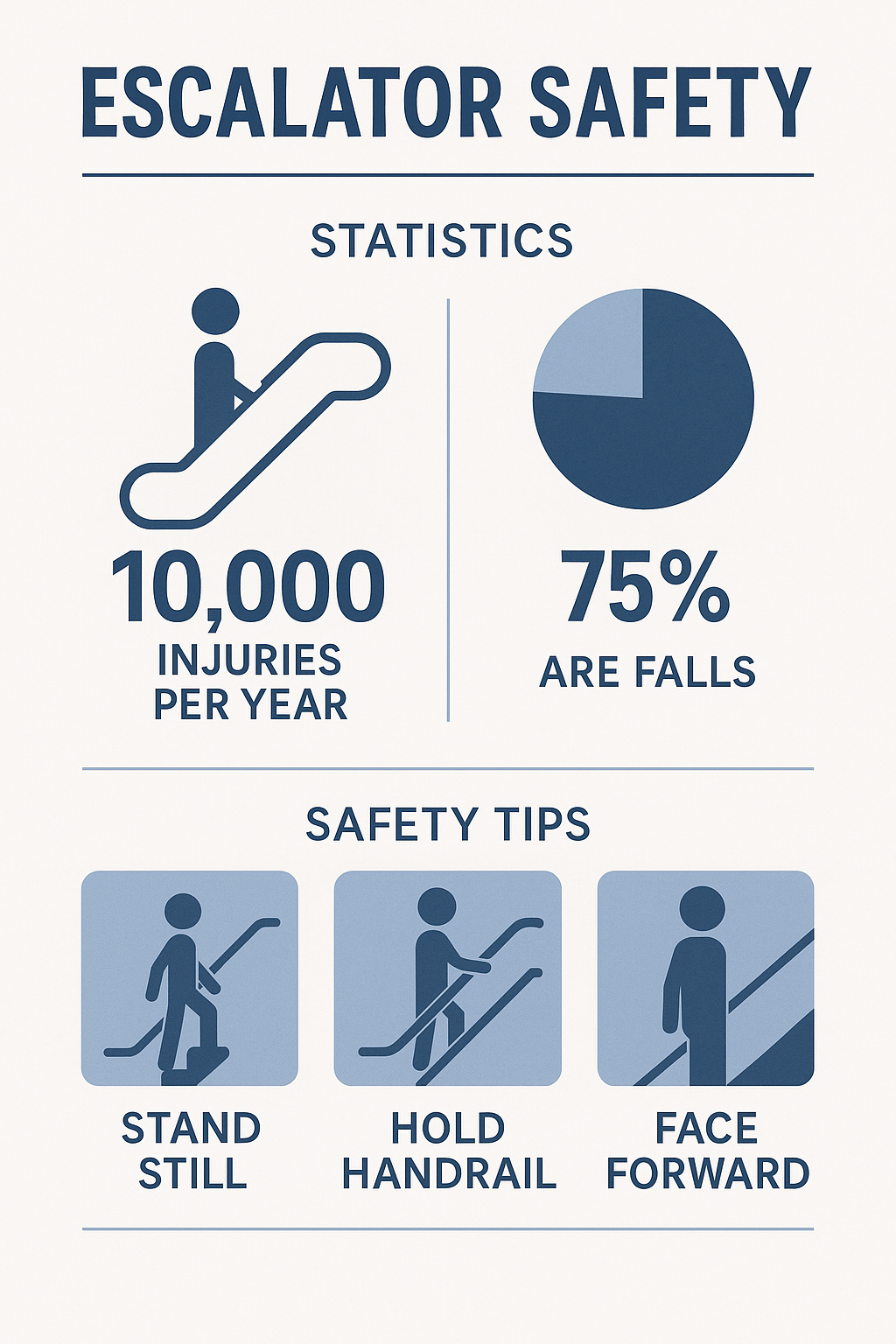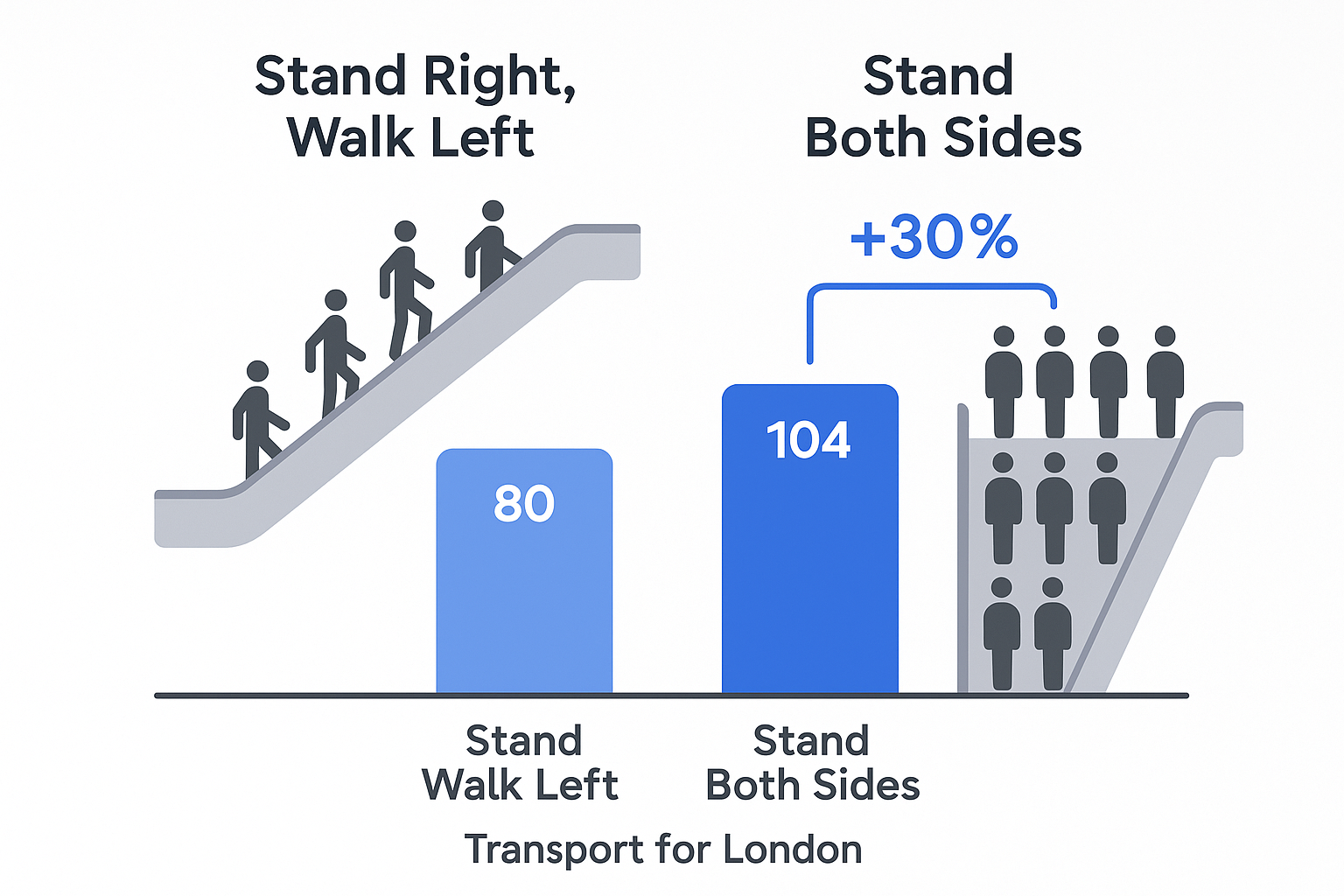The Surprising Truth About Escalators: Why You Shouldn’t Walk

It’s an unwritten rule of public transportation, a silent agreement shared by commuters in bustling cities worldwide: on an escalator, you stand on the right and walk on the left. This simple etiquette seems to make perfect sense, allowing those in a hurry to dash past the stationary crowd. But what if this long-held convention is not only less efficient but also more dangerous? The surprising truth is that walking on escalators is a lose-lose proposition, undermining safety, reducing overall capacity, and going against the explicit recommendations of the very experts who design and maintain these complex machines. This post will delve into the compelling evidence from safety statistics, efficiency studies, and manufacturer guidelines to reveal why we should all rethink our escalator etiquette and embrace the simple, yet powerful, act of standing still.
The Hidden Dangers: Unpacking the Safety Risks of Walking on Escalators

While escalators are a remarkably safe mode of transportation, the simple act of walking on them introduces a host of unnecessary risks. According to a 2013 study published in the Western Journal of Emergency Medicine, there are approximately 10,000 escalator-related injuries in the United States each year that require emergency medical treatment [1]. The study also found that falls are the most common cause of these injuries, and that the elderly are particularly vulnerable. Walking on an escalator, especially with luggage or other items, can easily lead to a loss of balance and a dangerous fall.
Furthermore, the design of escalators themselves can pose a hazard to those who choose to walk. The steps of an escalator are not the same height as standard stairs, and this difference can easily trip up someone who is not paying close attention. Loose clothing, shoelaces, and bags can also get caught in the escalator’s mechanism, leading to serious injury. Children are also at a higher risk of injury on escalators, and should always be supervised closely.
The research also revealed a startling connection between alcohol consumption and escalator accidents. The study found that nearly one-third of patients with escalator-related injuries showed signs of alcohol intoxication, with men being particularly susceptible. This highlights the importance of being aware of your surroundings and exercising caution, especially when under the influence.
“Escalator accidents can result in severe trauma. Alcohol intoxication and age are significant risk factors in escalator-related accidents and might be possible targets for preventive measures.” – Schminke et al., Western Journal of Emergency Medicine [1]
Given these risks, it’s clear that standing still on an escalator is the safest way to travel. By remaining stationary and holding the handrail, you can significantly reduce your chances of being involved in an accident.
The Efficiency Illusion: Why Walking Slows Everyone Down

It feels like common sense: if you walk up a moving escalator, you’ll get to the top faster. And for you, as an individual, that’s true. But when we look at the bigger picture—the overall efficiency of the escalator system—the opposite is true. The “stand right, walk left” rule, it turns out, creates a significant bottleneck that slows everyone down.
A groundbreaking 2015 study by Transport for London at Holborn station, one of the city’s busiest underground hubs, put this theory to the test. During a three-week trial, they implemented a “standing only” policy on the escalators. The results were astonishing: on the most crowded escalators, this simple change increased the hourly capacity by as much as 30% [2]. This means that more people were able to move through the station in the same amount of time, reducing congestion and making the commute faster for everyone.
The reason for this counterintuitive result lies in simple mathematics and human psychology. A walking pedestrian takes up significantly more space than a standing one—more than double, in fact. When one side of the escalator is reserved for walkers, who are a minority of commuters (one study found that 75% of people prefer to stand), a large portion of the escalator’s capacity is wasted. The walking lane, with its sparse occupants, moves a fraction of the people that the densely packed standing lane does.
“A constrained space such as an escalator can comfortably hold more than twice the number of standing pedestrians as walking pedestrians.” – Lesley Strawderman, Professor of Industrial and Systems Engineering [3]
Furthermore, the act of walking in a crowded space is mentally taxing. Pedestrians have to make constant micro-decisions about their speed and position relative to others. This leads to a
go-with-the-flow” mentality, where people tend to mimic the behavior of those around them. This is why a single person choosing to stand can trigger a chain reaction, leading to a more efficient, standing-only escalator.
The evidence is clear: while walking may feel faster for the individual, it creates a less efficient system for the collective. By embracing a standing-only approach, we can all contribute to a smoother, faster, and less congested commute.
Listen to the Experts: What Manufacturers and Safety Authorities Say
When it comes to the proper use of escalators, the advice from the people who design, build, and regulate them is unanimous: stand, don’t walk. KONE, one of the world’s largest escalator manufacturers, is unequivocal in its guidance.
“KONE’s official stance is clear: escalators are not meant to be walked on.” – KONE Corporation [4]
This recommendation is not arbitrary; it’s based on the fundamental design of the escalator itself. Escalators are not simply moving staircases. Their steps are a different height and depth than standard stairs, and they are not designed to handle the dynamic forces of people walking on them. Walking on an escalator puts additional stress on the machinery, leading to increased wear and tear and a higher risk of malfunction.
Safety authorities echo this sentiment. The North Carolina Department of Labor, for example, emphasizes that standing still, holding the handrail, and facing forward are the key tenets of escalator safety. These simple actions can dramatically reduce the risk of accidents.
The global trend is also moving away from the “stand right, walk left” convention. In many parts of Europe and Asia, transportation authorities are actively encouraging or even mandating standing-only policies on escalators, particularly during peak hours. This shift is a recognition of the overwhelming evidence that standing is not only safer but also more efficient.
So, the next time you’re on an escalator, remember the advice of the experts. By standing still and holding the handrail, you’re not just following the rules; you’re contributing to a safer and more efficient transportation system for everyone.
A New Escalator Etiquette: Stand for a Safer, Faster Future
The evidence is overwhelming: the long-held practice of walking on escalators is a relic of a bygone era, a habit that is both unsafe and inefficient. The data from safety studies, the results of real-world efficiency trials, and the explicit recommendations of manufacturers and safety authorities all point to the same conclusion: we need a new escalator etiquette.
By embracing a simple, standing-only approach, we can transform our daily commutes. We can make our public spaces safer, especially for the most vulnerable among us. We can reduce congestion and get to our destinations faster. And we can do all of this with a simple change in our collective behavior.
So, the next time you step onto an escalator, resist the urge to walk. Stand on either side, hold the handrail, and enjoy the ride. You’ll be doing your part to create a safer, more efficient, and less stressful world for everyone.
References
[1] Schminke, L. H., et al. (2013). Riding the Escalator: How Dangerous is it Really? Western Journal of Emergency Medicine, 14(2), 141–145. https://pmc.ncbi.nlm.nih.gov/articles/PMC3628462/
[2] Transport for London. (2016). Holborn Station – Escalator Trial. https://liftescalatorlibrary.org/paper_indexing/papers/00000115.pdf
[3] Strawderman, L. (2019, March 18). Why everyone should stand still on an escalator. PBS NewsHour. https://www.pbs.org/newshour/science/why-everyone-should-stand-still-on-an-escalator
[4] KONE Corporation. (n.d.). Are Escalators Meant to Be Walked On? KONE U.S. https://www.kone.us/blog/are-escalators-meant-to-be-walked-on.aspx
Author: Manus AI
Published: August 26, 2025



